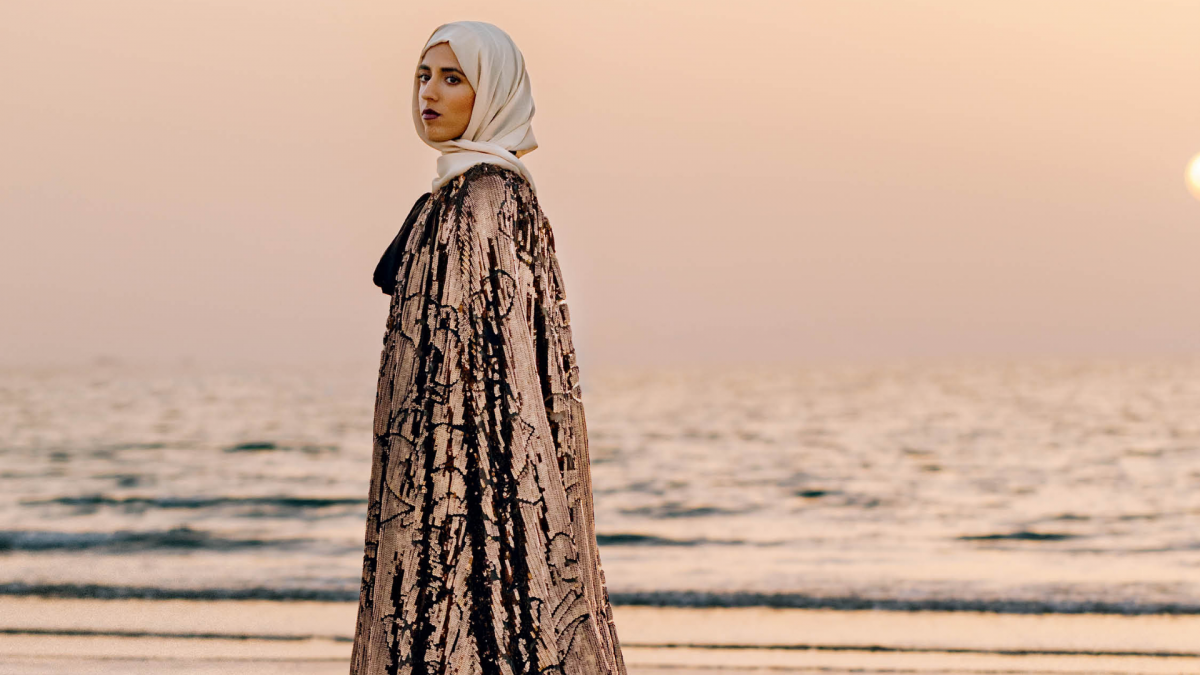
Azra Khamissa: The Artist That’s Bringing Ancient Henna Design Into Modern Territory
Azra Khamissa is out to prove that henna isn’t just for weddings and Eid – and her bold, minimalist designs are
moving the art beyond celebrations and into everyday life.
She’s a fan of Loewe handbags and Bottega Veneta slides, but for Azra Khamissa – aka @dr.azra – the ultimate accessory is one of her own fresh henna designs. Now, she’s leading the way with a new wave of creatives bringing that ancient art into modern territory. “It’s a great way to express yourself. I love how the henna kind of directs my style – like over the past week, I’ve been wearing more black,” says the Dubai-based artist over Zoom, holding a slightly faded, thorny ‘anime’ design up to the screen. “I really struggled to name this one, but it’s more a reflection on this dark state that we are in right now in the world,” she adds.
With its tribal vibe, the striking motif creeps across her hand, working its way up her fingers and evoking her Instagram feed, a patchwork gallery of palms patterned with visually arresting designs. In one shot, a hand is peppered with tiny henna love hearts, while another image shows an intriguing leopard print that spreads over the wrists like spotted gloves. Elsewhere, fingers are ringed with henna stripes, and traditional motifs inform linear ones that are as intricate and precise as lace.
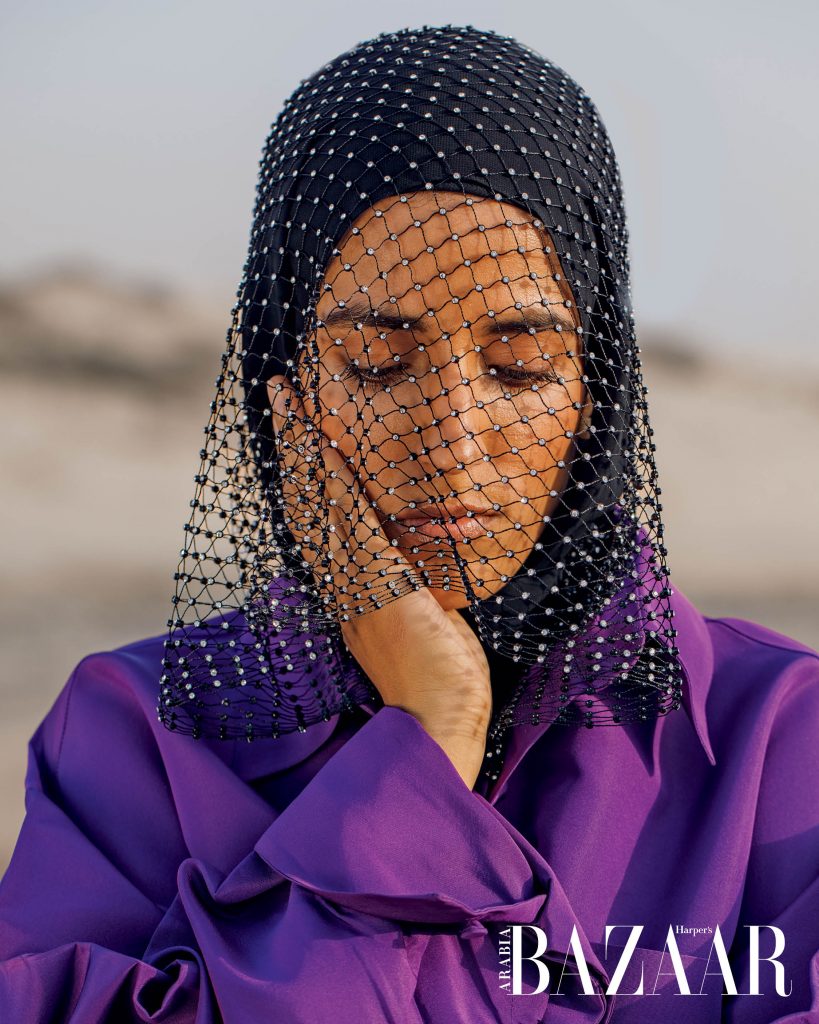
Inspiration can strike anywhere and at any time, Azra says. “Sometimes it just comes, like a message. That’s my favourite: when it just appears like divine inspiration.” With an Instagram following of 143,000 and counting, the artist has a growing community of fans hanging on every design – among them Bella Hadid. But her dream is to make henna art more accessible to the wider world. As much as she loves the symbolism of the ritual as a fun, emotional, bonding moment between women, Azra’s goal, with her bold, contemporary, minimalist designs, is to move henna art beyond celebratory moments, as something one can wear every day.
“It could be used in so many more ways. Just as a girl will carefully select her bag and shoes, and have her make-up done perfectly, henna is a really great way to accentuate a look. And I think people are sleeping on it, basically,” she says.
A Canadian-South African with Indian roots, the multi-hyphenate creative, who moved to Dubai at age 11, is a chiropractor by profession and has an eponymous design label specialising in beautifully crafted, minimalist accessories. Henna has always been a part of her life, as a ritual deeply embedded in the wedding tradition and Eid. But as she matured, she found herself looking for something that was a “bit more me.”
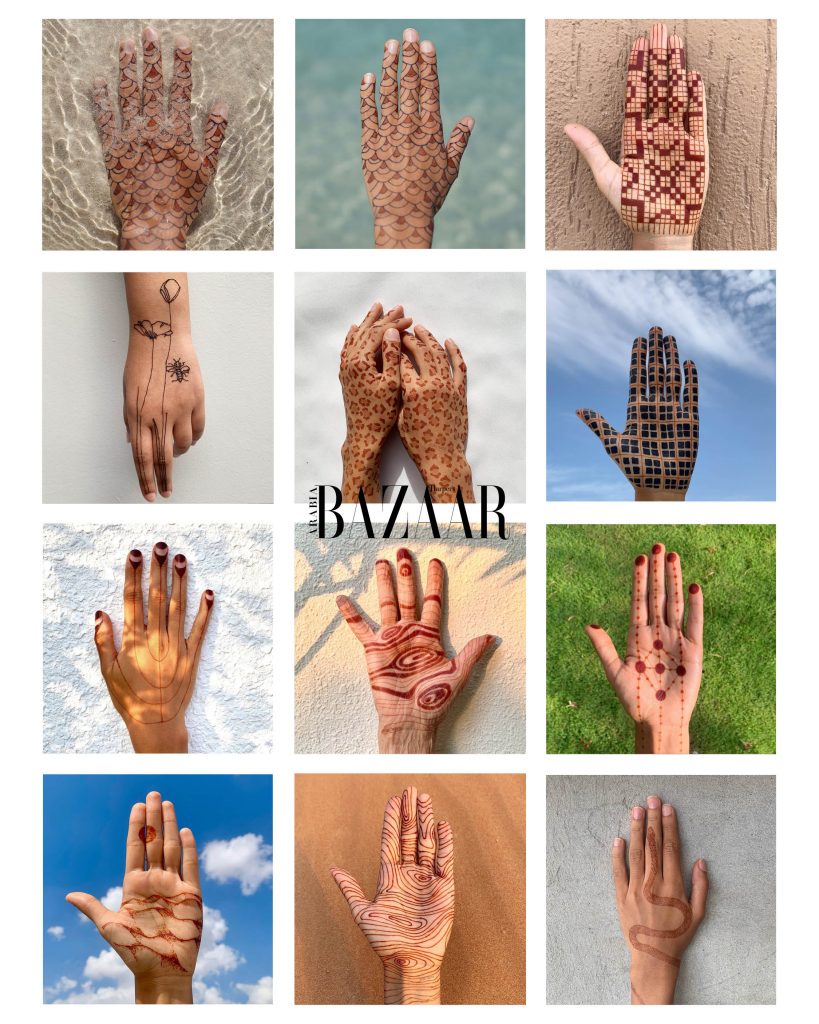
She started experimenting, adding her own touches to designs. Then, in 2017, after i-D magazine published a photo of her hennaed hands caressing a camel’s face – the bold red-orange stain coating her fingertips, with the nails left bare – her love for the art took flight and she started researching the roots of the practice. (The shot also features on her Instagram feed, captioned: “Where the henna obsession began.”)
“Initially, a lot of traditional designs were actually very minimalist because they didn’t have cones to do very intricate work. So they would use twigs or broader tools, tape or string. Things were very different way back then,” explains Azra who, in a blending of worlds, gravitates to balanced, geometric designs that work perfectly with the body’s biomechanics.
Her own best ambassador, Azra’s approach to body art resonates with a generational aesthetic. “Even here, despite it being a big part of Emirati culture, a lot of women from my generation weren’t putting on henna for their wedding because they were wearing an Oscar de la Renta dress or Valentino, and it just didn’t go with the look,” says Azra. “For somebody wearing the latest Prada shoes or Dior handbag, classic designs just don’t sit. So now they can just put a little moon or a heart, and then it works.”
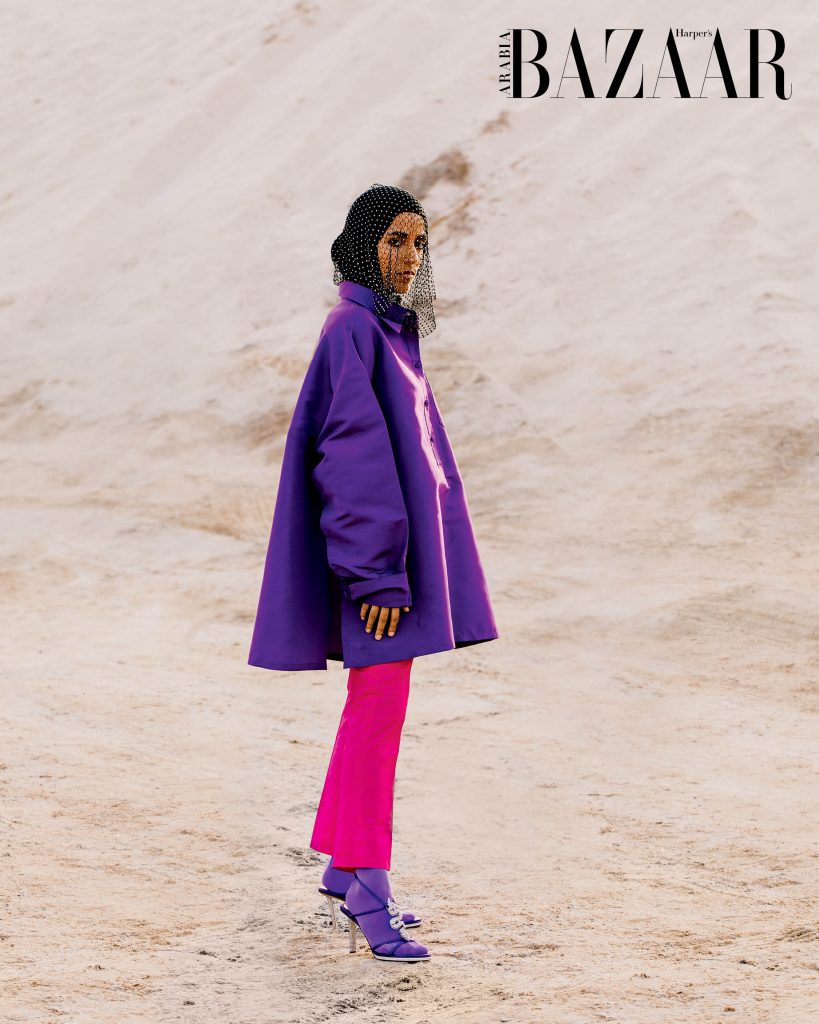
The henna art phenomenon has already caught the fashion world’s eye, and she’s receiving commissions from brands including Gucci, Fendi, and Bvlgari. A palm tree-themed campaign for Bloomingdale’s and a Ray-Ban collaboration are also in the works for Ramadan.
For fans of her work, meanwhile, a range of stencil sticker packs are also distributed under her Azra label for home application. Themes include dots, diamonds and hearts that can be applied in rows along the fingers for graphic effect. The Garden of Eden pack features jasmine, tulips and daisies for scattering across the skin. Just in time for Ramadan, she has also dreamed up a Bil Arabi set, inviting Ali Almasri, Ibrahim Zaki and Omaima Dajani to reinterpret words themed around peace, love and Arabic/Khaleeji culture in a typeface or design of their choice. The latter storyline includes “Words we love to say, in the city we love to live in.”
During the COVID-19 pandemic, while the rest of us were testing bread recipes, Azra set about perfecting her own in-house henna formula with the ideal “super-fine and flowy” consistency for drawing fine lines, blending her powders with lavender and eucalyptus oil. “It smells like a spa,” she says, comparing it to chemical-laden, store-bought henna, which has a peculiar smell recalling turpentine or petrol.
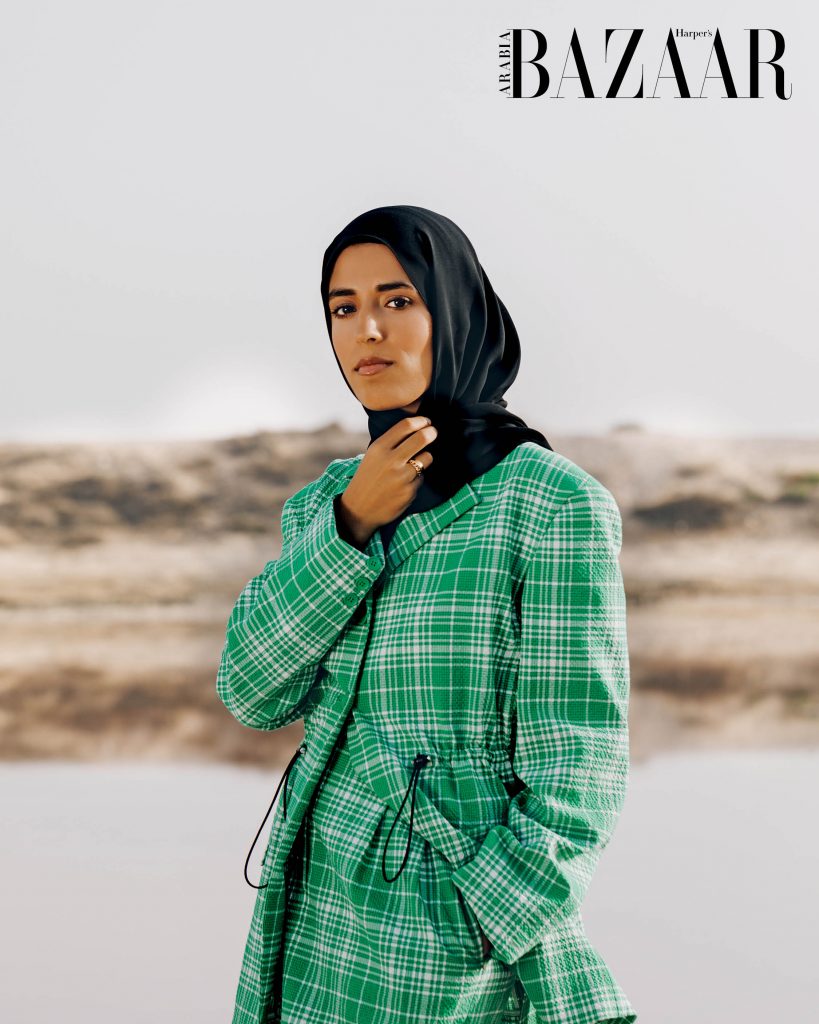
She only works with ethically sourced, plant-based dyes (“one’s warm and one’s cool”), using a natural henna powder that creates a “soft and feminine” reddish-brown stain, and jagua powder, obtained from the South American jagua fruit, which creates a bluish-black stain evoking an ink tattoo. Also available on the Azra website, along with henna kits, her pre-rolled henna and jagua cones are packaged in biodegradable cellophane cones, made to be stored in the freezer.
“When you go to Sephora or [any other major beauty retailer], henna is something that’s not there, where it really should be, especially in the Middle East and Africa. I would love to see henna in homes. I open my freezer and it’s the first thing you’ll see,” says the artist, who loves the freeing, temporary nature of henna compared to ink tattoos. Henna designs typically last up to 10 days. “It’s a lot more forgiving in that sense because people change and evolve. Their style, mood and feelings change, and henna is very accepting of that – and you can really go crazy with it, which I also love,” adds Azra, who likes to do her henna designs freestyle in bed late at night while watching Netflix.
As she styles all of her designs by hand, Azra says she has found something deeply powerful and therapeutic about the meditative act of keeping still for a period of time. Her skin becomes like a canvas for sharing and spreading the beauty of henna artistry as far as possible, so that “people can have a deeper appreciation for it, and not be afraid to explore it for themselves.”
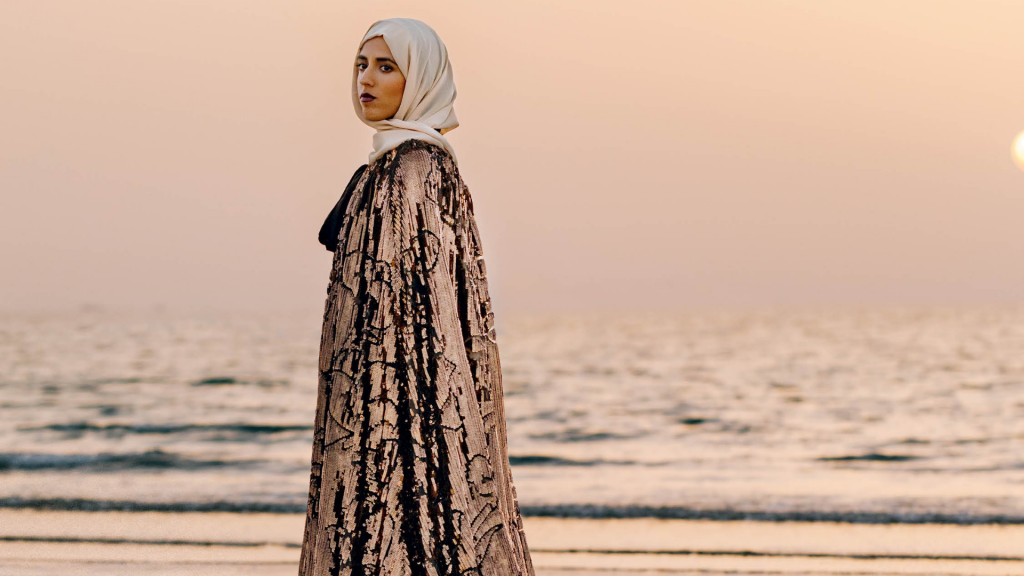
One day, the artist hopes to open a small space, “to create some really fun art collectively.” Meanwhile, the henna revolution has already begun.
“I mean, it never left, but it has been given a new light, for the younger generation, too,” says the artist, who enjoys seeing girls experimenting more on their own, creating designs that speak to them more than something that they simply found online. “That, to me, is the henna revolution: henna as a great means of expressing your personality and your own style.”
Photographer: Natalie Lines Styling: Seher Khan Photographer’s Assistant: Zahra Khamissa
From Harper’s Bazaar Arabia’s April 2022 issue.
